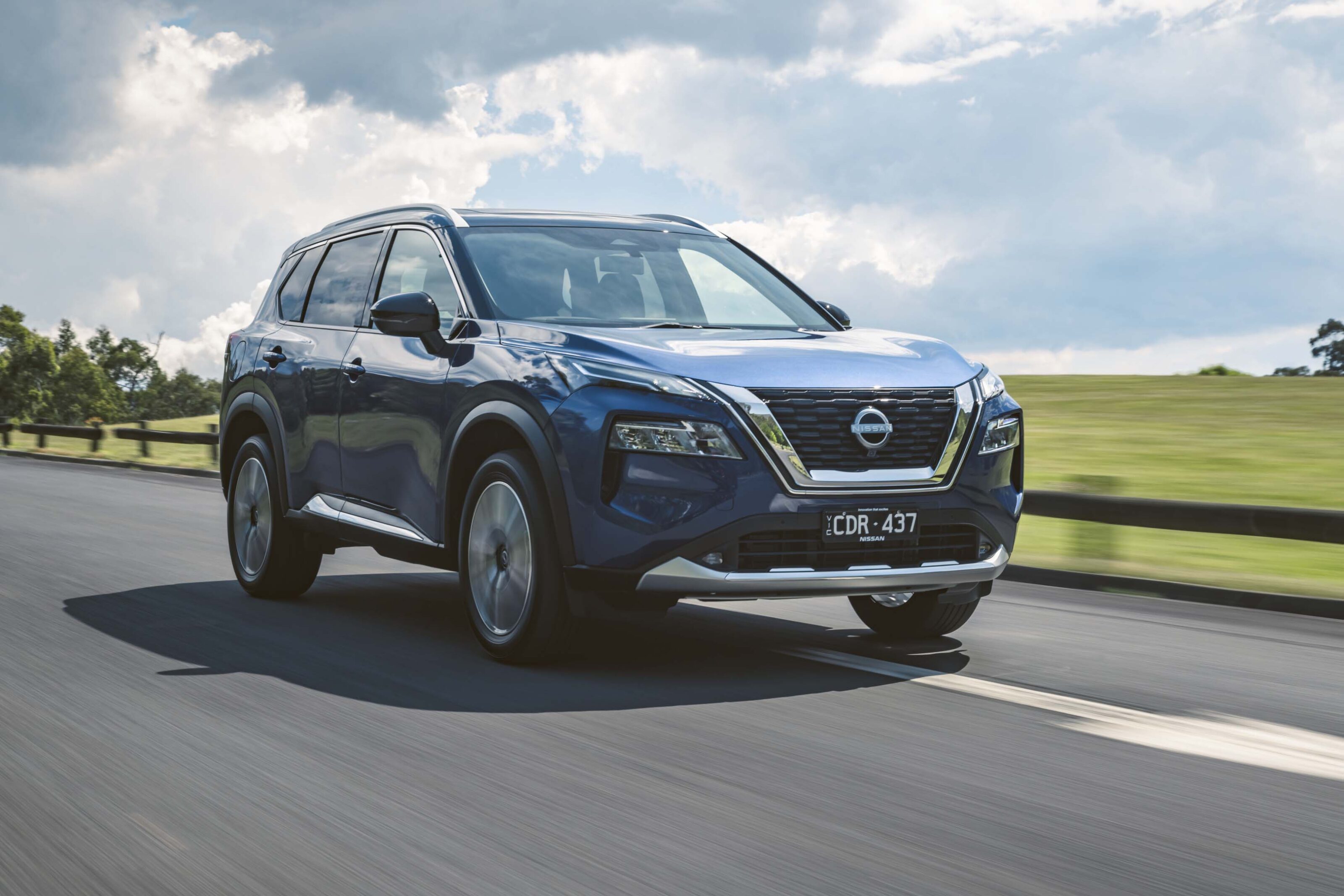Score breakdown
Things we like
- Standard safety features
- Excellent ride and comfort
- Vastly improved cabin
- Lots of space
Not so much
- No diesel or hybrid champion – yet
- Quality and tech comes at a cost
Nissan’s X-Trail is an indelible part of Australia’s mainstream mid-sized SUV fleet. Not only does it offer an affordable option from a trusted Japanese brand, but a diverse range of variants has always meant there’s something for everyone.
It’s no surprise, therefore, that the X-Trail is Nissan’s most popular model after the Navara ute.
But the 2023 X-Trail has just arrived and, for now, it offers just one drivetrain, no hybrid options and an increased price across the four-grade line-up.
In a fearsomely competitive market, can Nissan’s favourite SUV make a splash with a comprehensively revised offering and a significant injection of standard kit and technology?
JUMP AHEAD
- How much is it and what do you get?
- How do rivals compare on value?
- Interior comfort and space
- What’s it like to drive?
- Warranty and running costs
- VERDICT
- Specifications
How much is it and what do you get?
The 2023 X-Trail range comprises four variants with choices of front- or all-wheel drive depending on the specific version. The more affordable end of the range kicks off with the $36,750 ST 2WD or about $3000 more for the AWD version, which gets seven seats. The middle of the line-up is represented by the $43,190 ST-L 2WD which is also on offer with all-wheel drive and seven seats. Both prices before on-road costs.
For our first meeting with the new model, however, we only had a chance to get behind the wheel of the new range-topping Ti and Ti-L which are exclusively all-wheel drive five-seaters and cost $49,990 and $52,990 respectively (before on-road costs).
All versions get a revised version of the previous 2.5-litre petrol four-cylinder which has been uprated to produce 135kW and 244Nm – an increase of 9kW and 18Nm – and again bolted to an automatic continuously variable transmission (CVT).
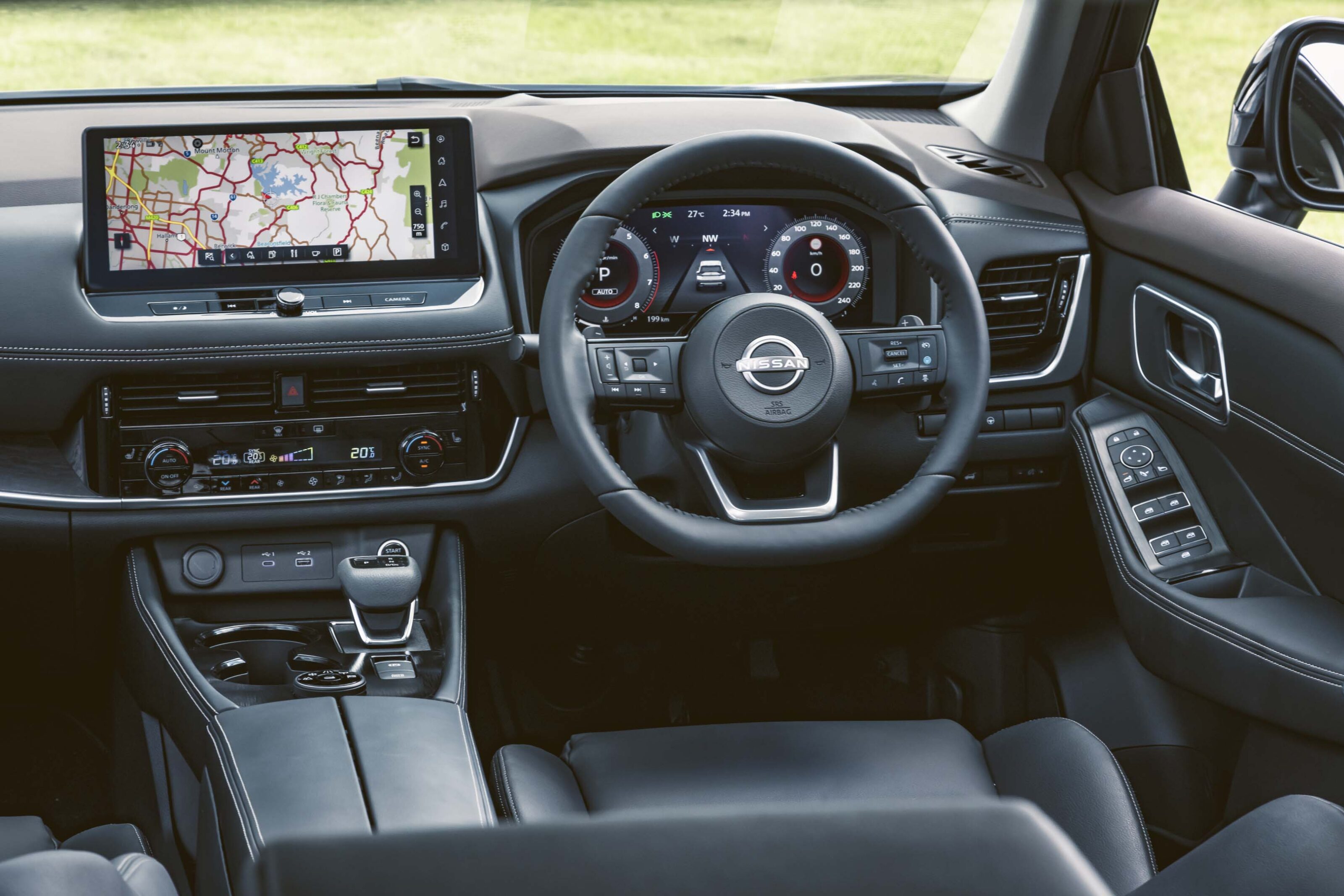
Included as standard for all variants are LED headlights, Android Auto, Apple Carplay, a 7.0-inch driver’s information display and 8.0-inch central touchscreen, reversing camera and parking sensors, keyless start and a choice of six paint colours.
An extensive suite of standard safety features includes auto emergency braking (AEB), cruise control, lane departure warning and prevention, rear cross-traffic alert and reverse AEB.
Go for any X-Trail above the ST entry point and Nissan’s ProPilot system is included too, which adds adaptive cruise control that works all the way down to stop-start traffic. In practice, the system is smooth in operation and is more effective at locking on and off cars ahead than some brands’ systems.
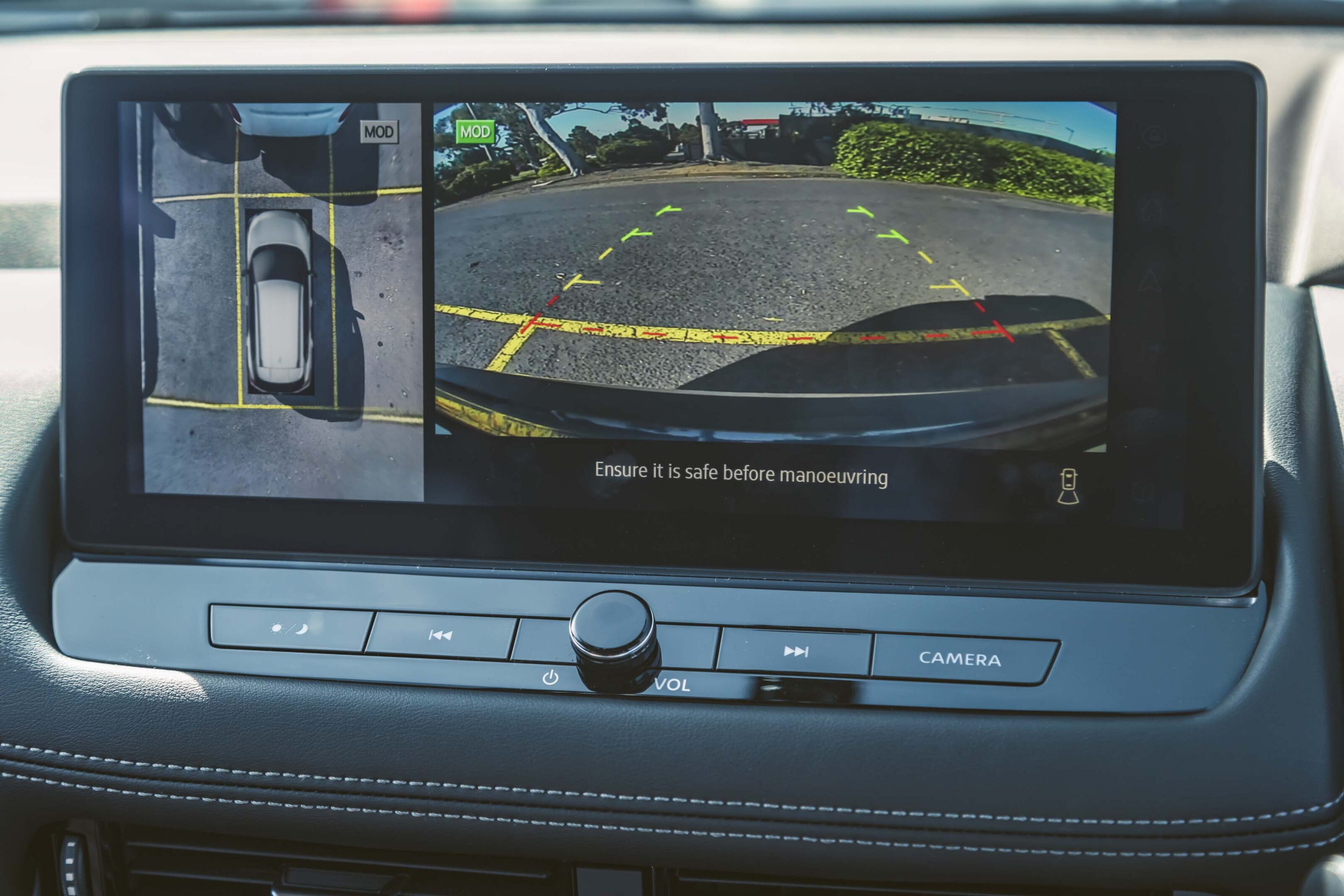
Step up again to the Ti, however, and Nissan upgrades the central screen to a wide version measuring 12.3 inches, the instrument cluster becomes all-digital and also measures 12.3 inches, while a 10.8-inch head-up display is included as standard.
Android Auto remains wired but Apple CarPlay is wireless, in conjunction with wireless device charging.
Lighting is all LED on the Ti, including indicators and matrix adaptive headlights, while 10-way electric adjustable seats are provided for front passengers, there is part-leather upholstery throughout and tri-zone air conditioning, a panoramic glass roof and 19-inch alloy wheels complete the upgrades.
The money-no-object Ti-L comes with a 10-speaker Bose sound system, Nappa leather seats with memory for the front two, heated rear seats and sunshades for their occupants, a hands-free electric tailgate, heated steering wheel and remote engine start.
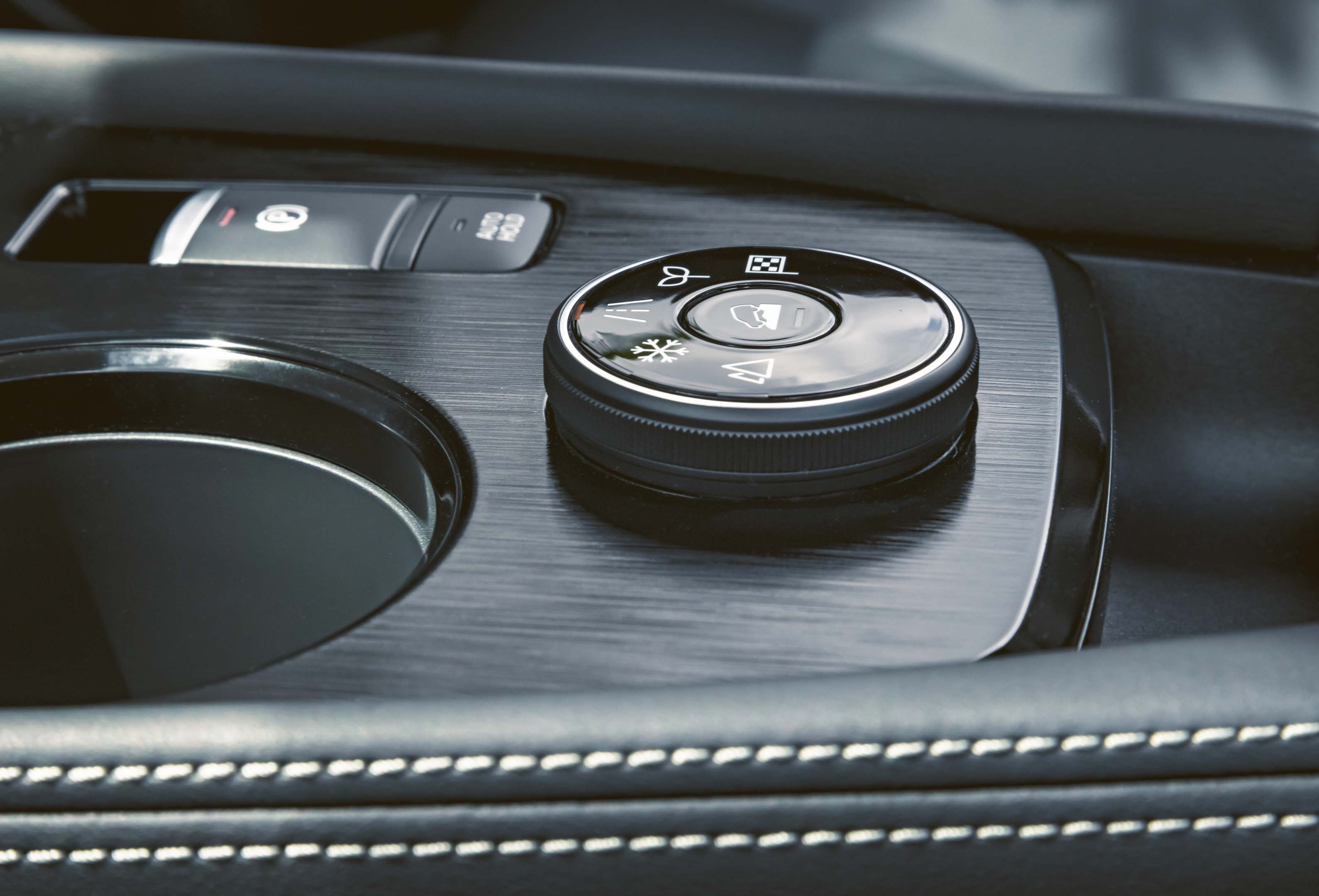
How do rivals compare on value?
In such a popular segment, the X-Trail has plenty of competition. It goes up against the Toyota RAV4 which offers hybrid drivetrains and tops out at $55,150 before on-road costs for the flagship Edge AWD Hybrid.
Mazda’s CX-5 is also available with a choice of three drivetrains including a diesel and is priced comparably at the pointy end, while the Kia Sportage also aligns closely to the X-Trail range, performance and pricing, although it too has more engine choices.

Interior comfort and space
For the fourth-generation model, X-Trail prices have increased across the board – including this high-spec Ti that now costs $3875 more than the previous version – but the cabin is where a vast majority of that extra spend is evident.
A wall of high-resolution digital displays meets anyone boarding the Ti in the front row, immediately imparting a sense of quality and technological superiority not yet seen from the Nissan brand.
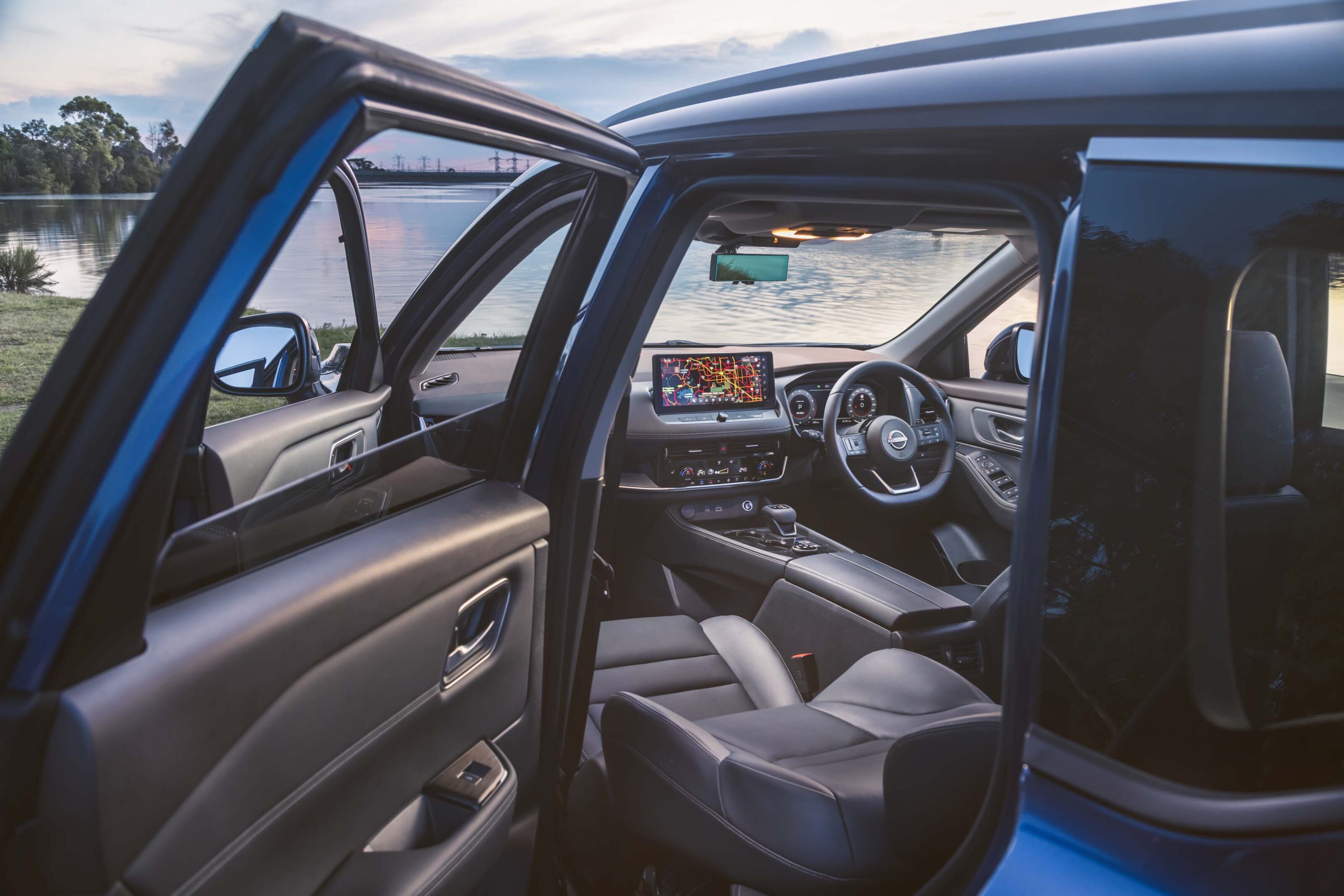
In both the digital instrument cluster and central touchscreen, the graphics are sharp and attractive, while navigating the various systems and applications is simple and fast.
The screens are complemented by a 10.8-inch head-up display for the driver, completing a very impressive technological show by the X-Trail.
Leather comprises a majority of the seat upholstery and the leather steering wheel is particularly high quality, matching well with the upholstered dash and its French stitching, as well as pleasant quality materials throughout.
Skinny A-pillars enhance the view of the road ahead as well as letting in more light – along with the big panoramic glass roof – for a cabin that feels as big as it is.
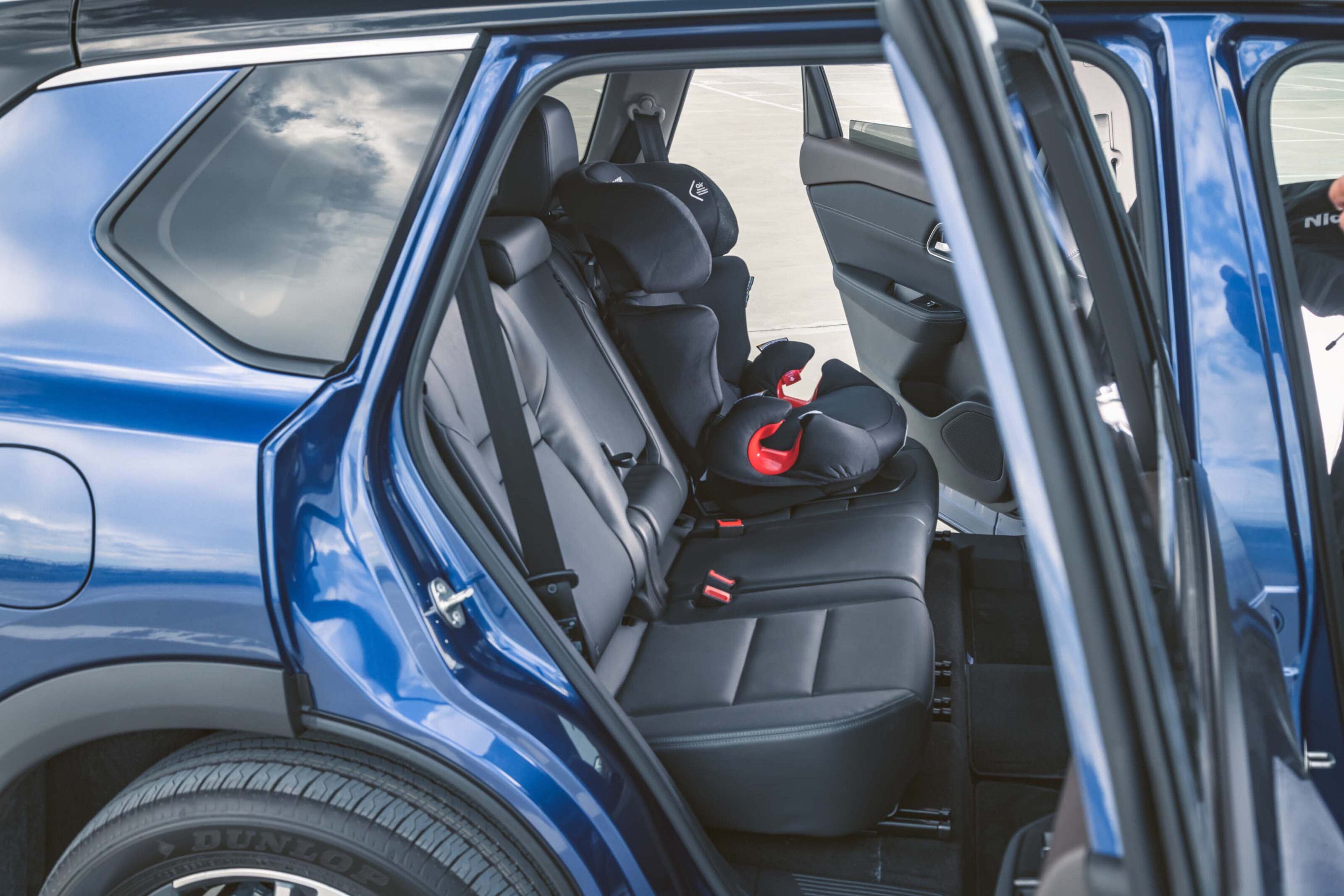
A seven-seat option is not available for either of the top Ti or Ti-L but the X-Trail’s third row is certainly not a place for adults and the larger boot of the five-seat version may be a more useful attribute for the majority of owners.
Furthering the X-Trail’s practical versatility is a very comfortable second row of seating with 40:60:40 split-folding, tilting backrests and sliding bench, while 82-degree rear door openings are a breeze to hop in and out of, or for loading things, for example.
Speaking of which, the presence of ISOFIX child seat attachments and requisite top tether anchorages for all three rear seats is another deal-sweetener that families will like.
2023 Nissan X-Trail boot space
Seven-seaters get a 465-litre boot whereas the five-seater’s 585L capacity is among the best in the segment.

What’s it like to drive?
The basics
| 2023 Nissan X-Trail Ti | |
|---|---|
| Engine | 2488cc4cyl, dohc, 16v, petrol |
| Power | 135kW @ 6000rpm |
| Torque | 244Nm @ 3600rpm |
| Transmission | continiously variable automatic |
| Fuel consumption (claimed) | 7.8L/100km |
Nissan has labelled the fourth-gen X-trail ‘all new’, including the platform it shares with the Mitsubishi Outlander. In reality, the CMF-C architecture is a heavily revised version of the previous X-Trail’s underpinnings and the same goes for its 2.5-litre non-turbo four-cylinder petrol engine.
Despite the chunk of carried-over hardware, however, the X-Trail feels very different on the road.
Performance has changed little, with just a hint more power and torque and the carry-over CVT has the same droning nature that you’ll either dislike or not notice at all. The engine, however, is a free-revving unit that is more refined and less thrashy than the previous version with reduced levels of noise, vibration and harshness making their way into the cabin.
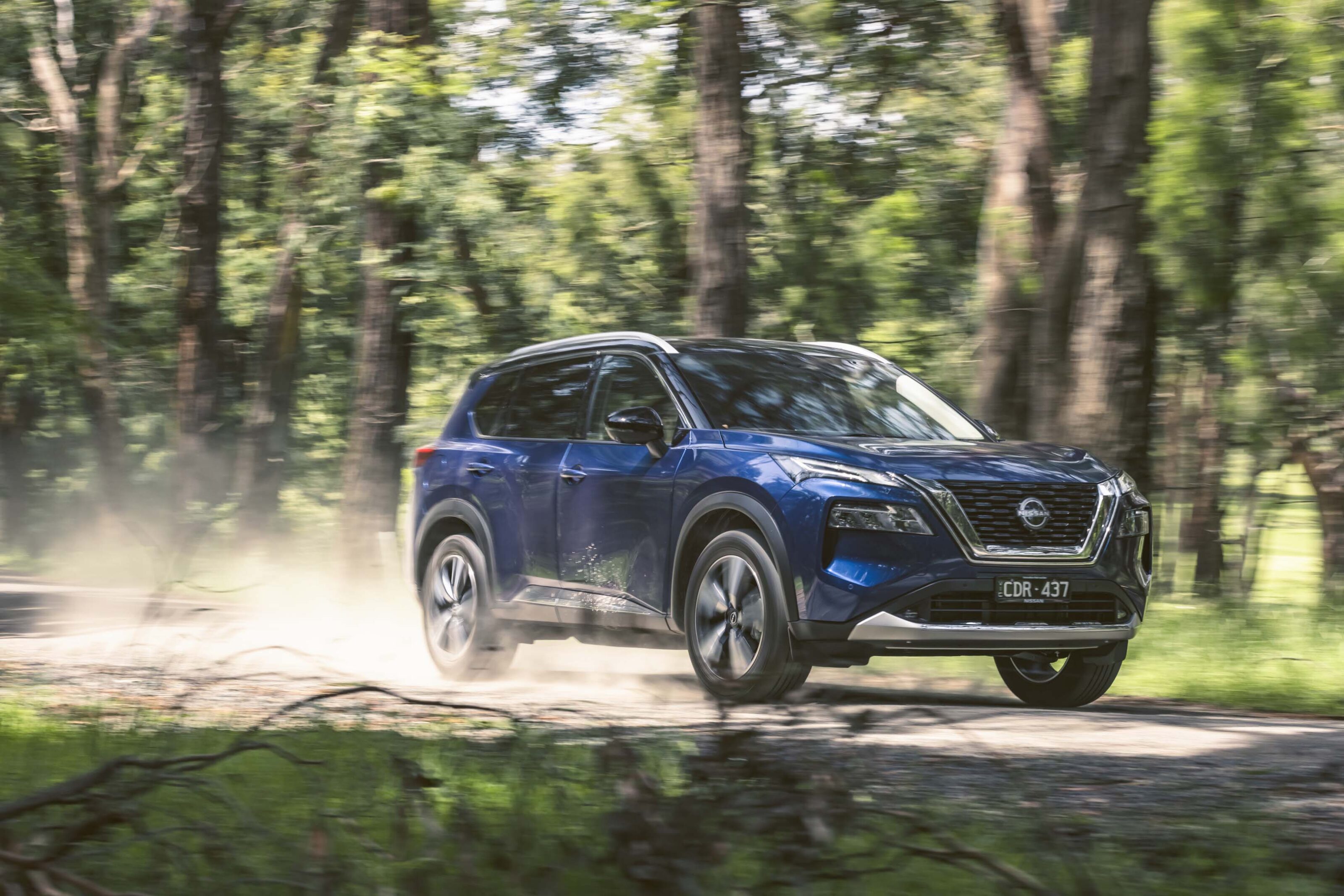
Without a turbo (and there’s no diesel option either), low-down torque is a little lacking and while initial acceleration is strong off the mark, the performance drops off quickly unless the engine is revved hard. This will certainly negatively impact the claimed average fuel economy figure of 7.8 litres per 100km.
For most day-to-day duties, the combination of revised petrol engine and CVT auto will be adequate for most owners.
What really stands out though, is the significantly improved ride. With a complete overhaul of the chassis and suspension tuning, the new X-Trail is both confident on its feet and comfortable, while road noise is also notably low.
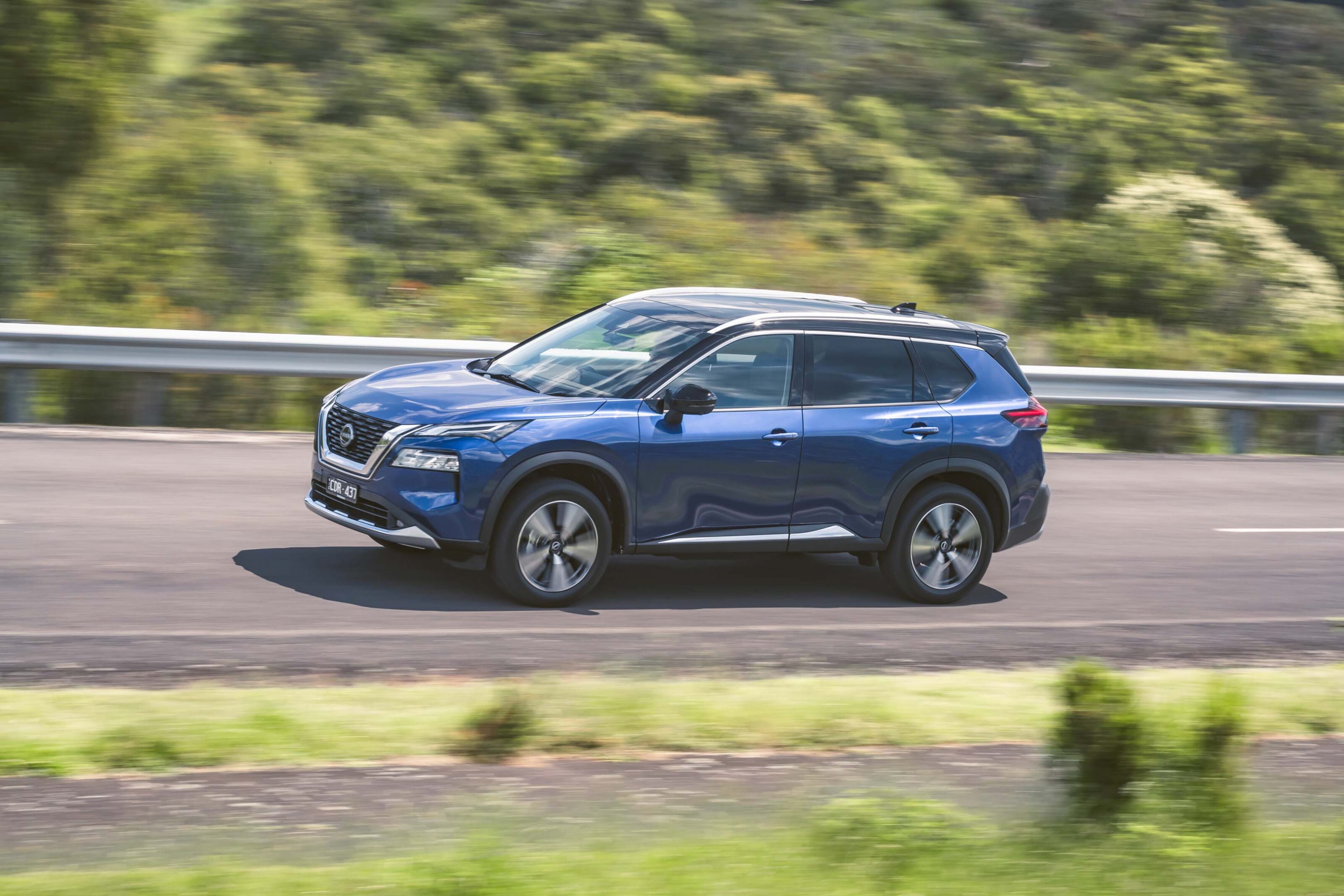
The pay-off is a little roll in corners and steering that, while fast and precise, is a little short on feel. But for an SUV that will be put to work ferrying people and things far more frequently than cutting laps of great driving roads, Nissan has struck a lovely balance of ride, handling and comfort.
Some recent sharp-edged road damage in Victoria was the enemy of 19-inch wheels fitted to the Ti and Ti-L X-Trails we drove at the launch and it’s likely the manners of the entry ST, which rolls on 17-inch alloys, will be even better. We’ll see if our speculation is correct when we get our hands on a mid- or entry-grade X-Trail.
A brief spin in the Ti-L offered a chance to enjoy its full Nappa leather upholstery, heated steering wheel, heated rear seats, ambient lighting and Bose stereo. Spending the extra $3000 over the Ti also brings front seat position memory, hands-free tailgate opening and rear sunshades which maxes out the X-Trail’s luxury credentials but we’d find it hard to justify the cost when the Ti is so well-appointed.
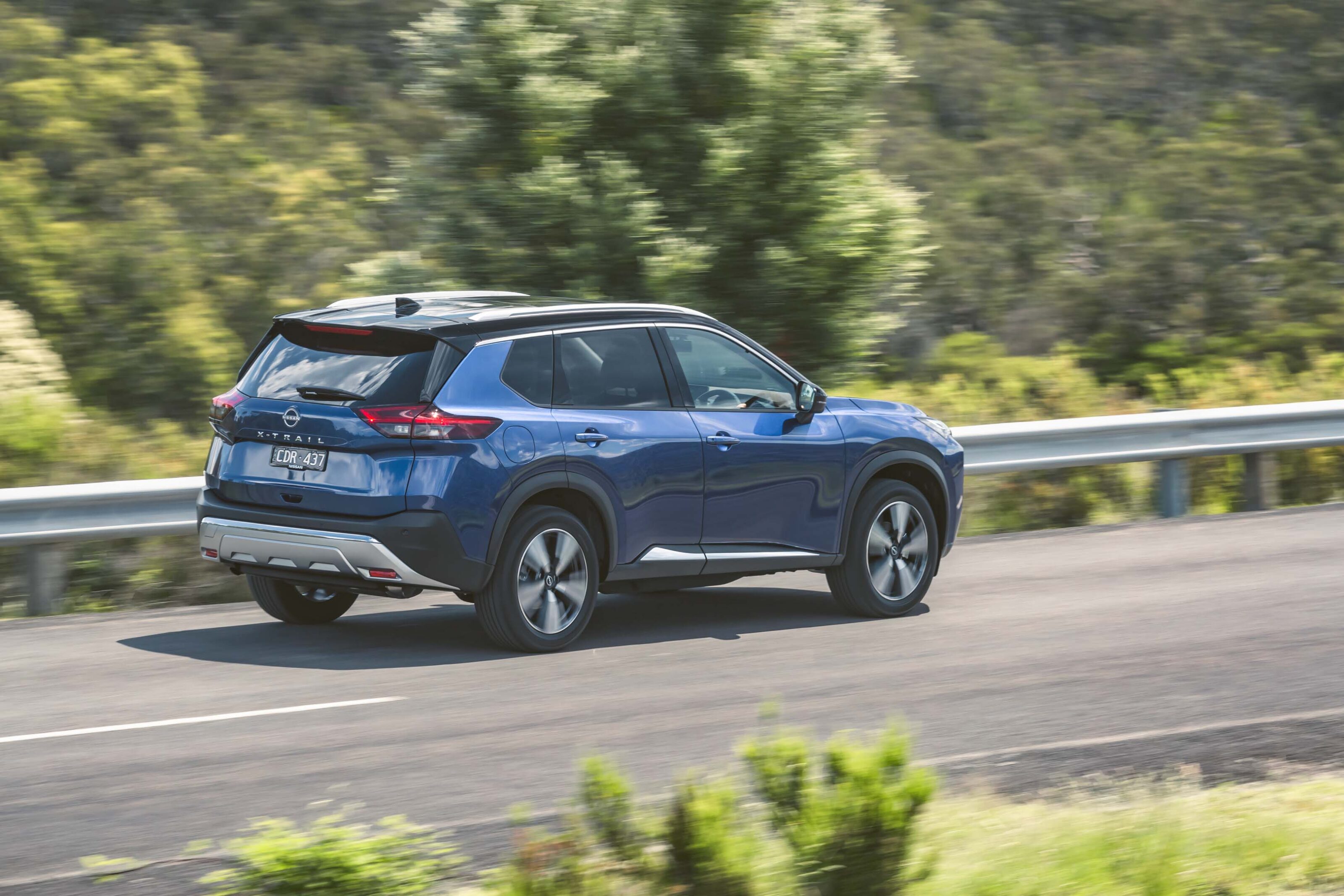
Warranty and running costs
Like all new Nissans, the 2023 X-Trail is offered with a five-year, unlimited-kilometre warranty along with roadside assistance for the same period.
All Nissans registered from the 1st of January 2018 are eligible for capped-price servicing, which limits the maximum price paid for routine servicing and maintenance for the first six planned visits.
Customers can also buy a pre-paid maintenance plan that covers the first three, four or five scheduled services with a single payment.
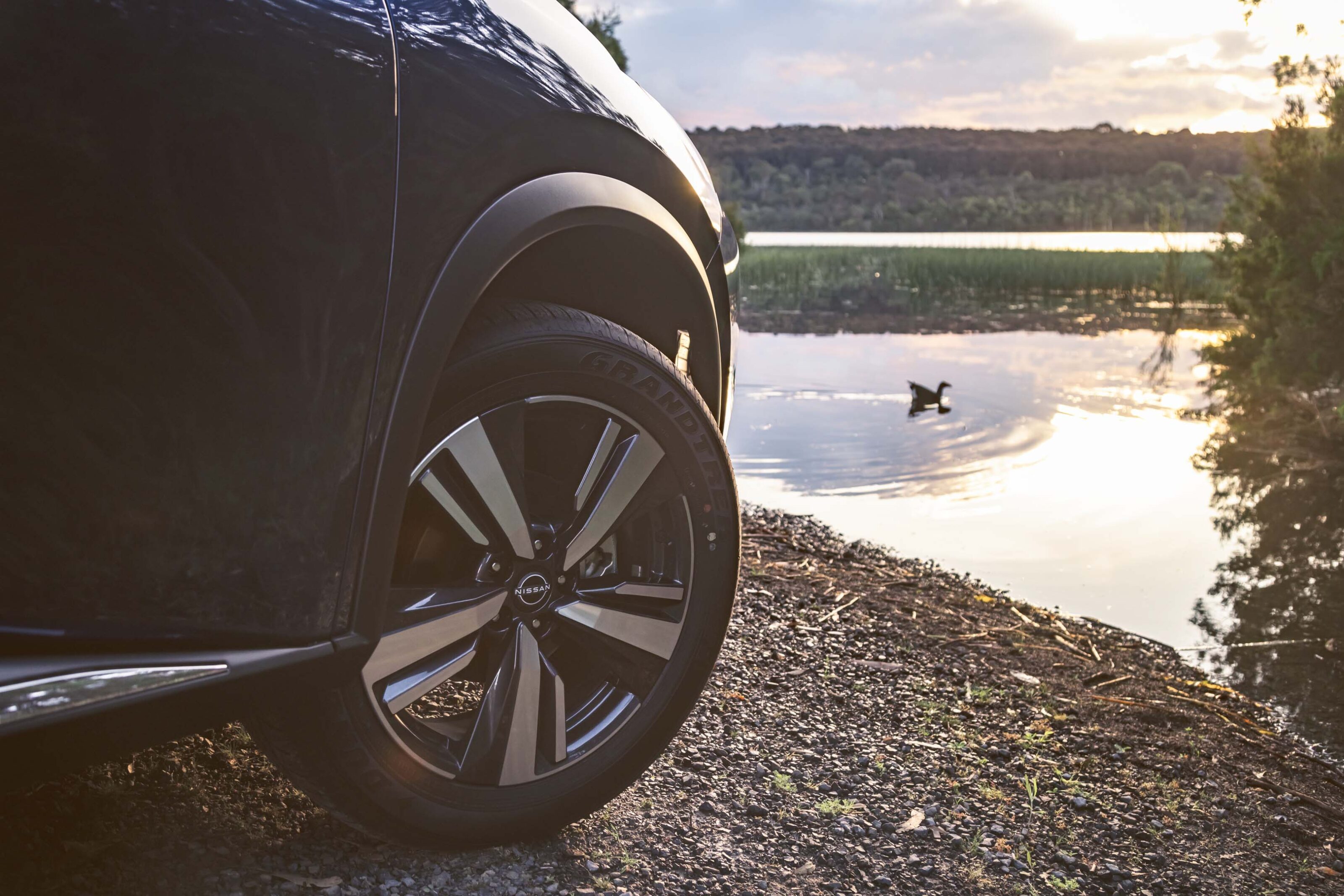
VERDICT
The fourth-generation X-Trail may not be as ‘all new’ as Nissan suggests but it certainly feels like it shares very little with the previous generation model. Its exterior styling has lifted the model from timid wallflower to confident contender, while a big spend on the interior and tech puts higher-spec variants firmly in premium territory.
It’s a shame its rather conventional engine couldn’t have been enhanced to do battle with more potent mid-sized SUVs and complete the transition, and the lack of a diesel or turbo-petrol means customers will have to wait for the e-Power hybrid version for something with a little more grunt and fuel economy. But of course, that would have pushed the high-end versions into even more expensive territory.
Those willing to write the cheque for a $50K X-Trail will get a version that’s unrecognisable from its predecessor and one that breaks new ground for the nameplate and Nissan as a brand.
As for the more crucial and affordable ST and ST-L volume players, that verdict will have to wait.
2023 Nissan X-Trail Ti specifications
| Engine | 2488cc4cyl, dohc, 16v, petrol |
|---|---|
| Power | 135kW @ 6000rpm |
| Torque | 244Nm @ 3600rpm |
| Transmission | continiously variable automatic |
| Fuel consumption | 7.8L/100km |
| Weight | 1668kg |
| L/W/H/W-B | 4680/2065/1725/2705mm |
| 0-100km/h | N/A |
| Price | from $49,990 |
Score breakdown
Things we like
- Standard safety features
- Excellent ride and comfort
- Vastly improved cabin
- Lots of space
Not so much
- No diesel or hybrid champion – yet
- Quality and tech comes at a cost
We recommend
-
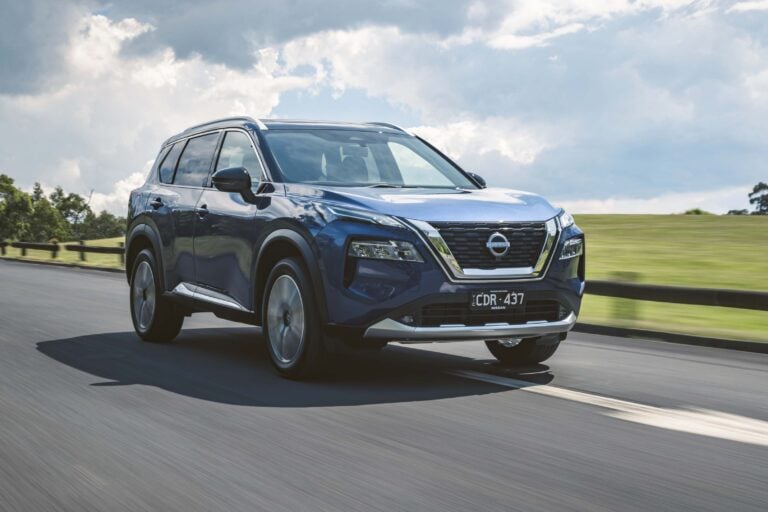 News
News2023 Nissan X-Trail pricing and features
The all-new X-Trail has arrived with four model grades, a host of safety features, and available hybrid power
-
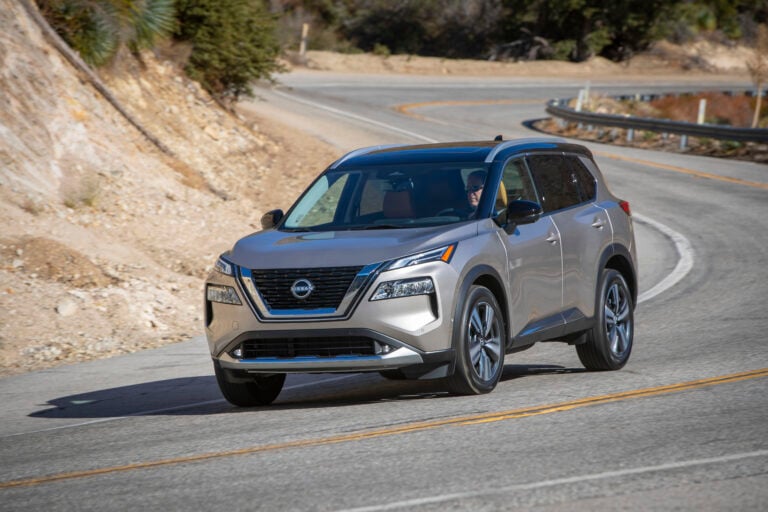 Reviews
Reviews2023 Nissan X-Trail review: First drive
More solid evolution than radical revolution, but Nissan has succeeded in making a more useable medium SUV for modern families
-
 News
NewsNew car calendar 2026: All the new cars coming to Australia next year
Here’s the WhichCar by Wheels guide to all the new cars that will launch in Australia in 2026. Check back in regularly for updates...


